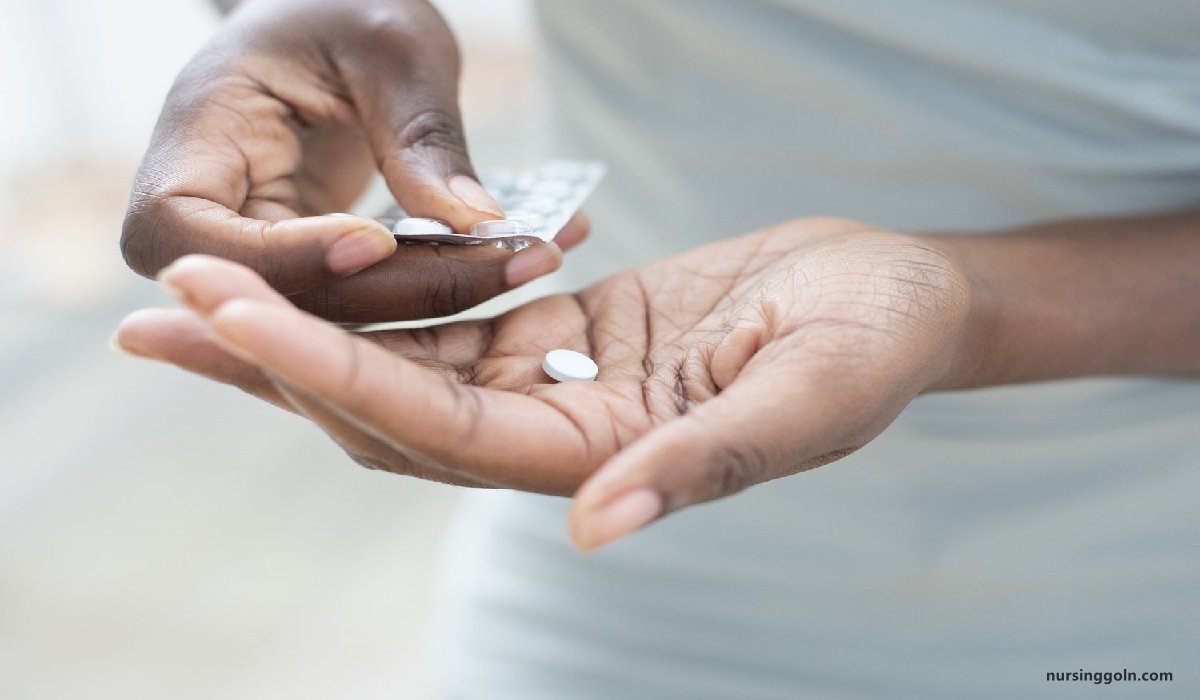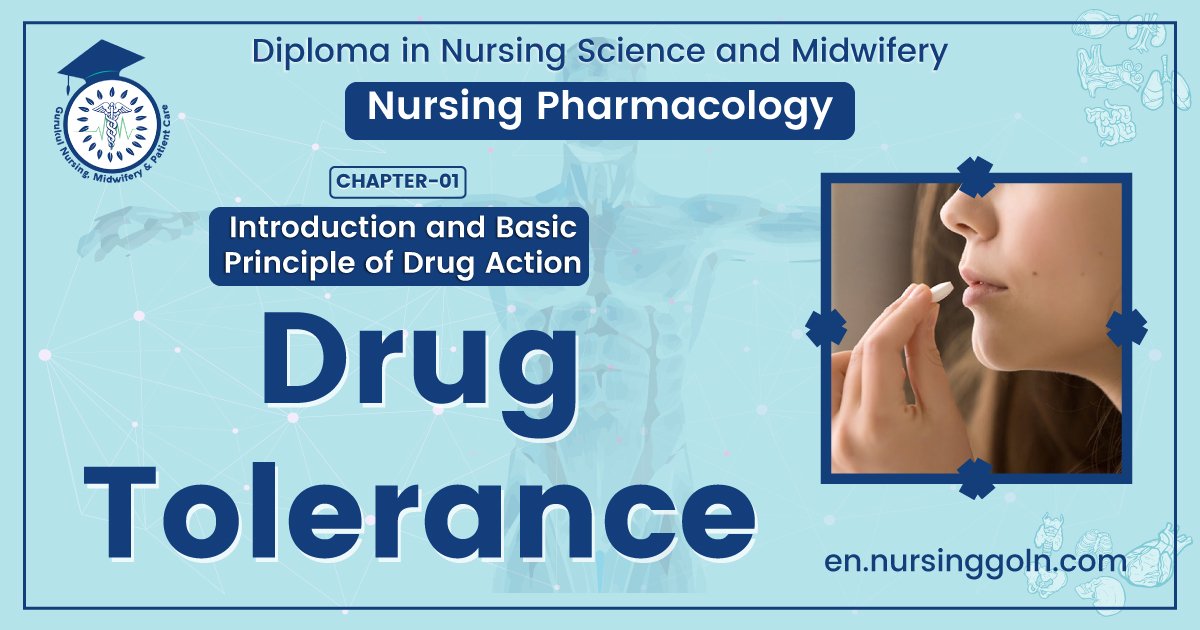Drug Tolerance – This book covers the entire syllabus of “Pharmacology” prescribed by BNMC- for diploma in nursing science & midwifery students. We tried to accommodate the latest information and topics. This book is an examination set up according to the teachers’ lectures and examination questions.
At the end of the book, previous questions are given. We hope in touch with the book students’ knowledge will be upgraded and flourish. The unique way of presentation may make your reading of the book a pleasurable experience.

Drug Tolerance
Drug Tolerance
Gradual diminution of tissue response to a drug due to repeated administration is called tolerance.
Stages of Tolerance
Habituation Addiction Dependence → Tolerance
Mechanism of tolerance
1. Pharmacokinetics tolerance:
- Increase metabolism of drug due to enzyme induction increase drug requirement
- Increase excretion of drug.
- Decrease adsorption of drug.
2. Pharmacodynamic tolerance:
- Decrease sensitivity of receptor site, to the drug increase drug requirement.
- Fixation of drug to the site of administration.
- Decrease number of active receptors or, increase number of silent receptors.
- Altered tissue response.
Types of tolerance: two types-
1. Pseudo-tolerance: Confined only to the oral route of drug administration.
2. True tolerance. Seen on both oral and parenteral route. It is of two types:
- Natural tolerance (from birth)-
✓ Species
✓ Racial
- Acquired tolerance
✓ Direct tissue tolerance
✓ Crossed tolerance: specific and non-specific.

Drug Abuse
Self-administration of drug for non-therapeutic purpose, almost always for altering consciousness. Such as: chronic intoxication with alcohol.
Commonly abused drugs (Centrally acting)
1. Narcotics: Opium, Heroin, Codeine, Pethidine, Morphine.
2. Marijuana: Bhang, Charas, Hashish.
3. Barbiturates: Mainly phenobarbitone.
4. Alcohol, Amphetamine, Cocaine, Nicotine.
5. Tranquillisers: Phenothiazide.
6. Anti-depressants: neo-inhibitors.
7. Hallucinogens: LSD, srp, DMp, masculine.
8. Others: amyl-nitrite, anti-histamine, toluene, glue snuffing.
Drug Accumulation:
When doses are given repeatedly, the drug will not immediately eliminated from the body but will accumulate in the body until dosing stop. This is called drug accumulation (i.e. drug
absorption is more than drug elimination). Cumulative drug effect may be desirable or undesirable.

Desirable cumulative drug effect:
- Anti-cancer drugs in the treatment of cancer.
- Anti-epileptic drug in the treatment of epilepsy.
- Digoxin in the management of CCF.
Undesirable cumulative drug effect:
- Aminoglycoside antibiotics: Nephrotoxicity.
- Lead poisoning.
Tachyphylaxis
Rapidly developed tolerance due to rapid administration of drug within a short interval of tine is called Tachyphylaxis. It is less commonly seen than tolerance.
Causes of Tachyphylaxis
- Exhaustion of store, e.g. amphetamine, ephedrine.
- Slow dissociation from receptor site.
- Saturation of receptors with drug
- Decrease tissue response.
- Desensitisation of receptors
Read more:
